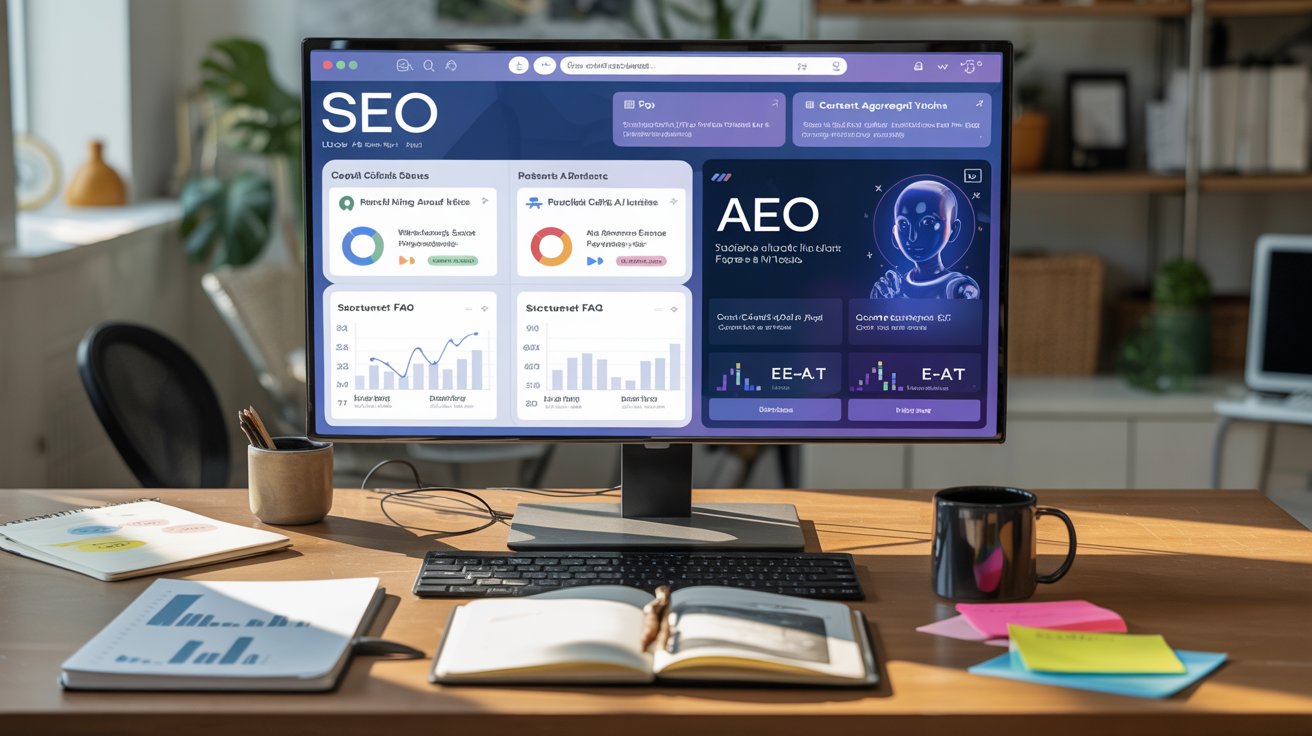In the fast-moving world of digital marketing, acronyms like AEO, GEO, and SEO often get tossed around—but what do they actually mean, and why should you care? Whether you’re a business owner, content creator, or marketer, understanding the differences between these three strategies can elevate your visibility, increase your leads, and help you dominate your niche.
What is SEO? (Search Engine Optimization)
Let’s start with the OG of online marketing: Search Engine Optimization or SEO. SEO is the practice of improving your website and content so that it appears higher on search engine results pages (SERPs), particularly on Google.
Core Elements of SEO
- On-page SEO: Optimizing content, meta tags, headers, and keywords.
- Off-page SEO: Building backlinks and social signals.
- Technical SEO: Site speed, mobile-friendliness, crawlability.
Why it matters: Every day, Google handles more than 8.5 billion searches, demonstrating its unparalleled ability to connect people with information instantly. . If your site ranks on the first page, especially in the top 3 positions, you’re far more likely to get clicks, traffic, and sales.
Pro Tip: Consistently publishing high-quality content, targeting the right long-tail keywords, and ensuring your website loads in under 3 seconds can significantly improve your SEO rankings.
What is AEO? (Answer Engine Optimization)
AEO, or Answer Engine Optimization, is the newer cousin of SEO. As voice search, AI assistants like ChatGPT, Siri, and Google Assistant become more popular, search behavior is evolving. People now ask questions, not just keywords.
AEO is all about:
- Structuring content to answer specific questions.
- Using structured data (schema markup).
- Creating concise, conversational, and authoritative content.
Why it matters: Featured snippets, People Also Ask boxes, and voice search results are pulling answers directly from well-optimized AEO content.
Example: Instead of just targeting the keyword “best running shoes,” an AEO-friendly approach would include answering questions like:
- “What are the best running shoes for individuals with flat feet?”
- “How to choose the right running shoe size?”
Pro Tip: Use tools like AnswerThePublic or Google’s People Also Ask to find the most common user questions in your niche.
What is GEO? (Generative Engine Optimization)
The new kid on the block—GEO stands for Generative Engine Optimization. With the rise of AI-powered search (think Google’s SGE, Bing Chat, and ChatGPT plugins), search results are being generated by AI, not just linked.
GEO Strategy Essentials:
- Focus on trustworthy, factual, and in-depth content.
- Build topical authority across your site.
- Ensure your brand is mentioned on high-authority sources.
- Prioritize E-E-A-T (Experience, Expertise, Authority, and Trust).
Why it matters: AI-driven engines pull summaries from multiple websites, meaning if your content is optimized for context and accuracy, it’s more likely to be included in AI answers.
Example: When users ask AI engines “What’s the best productivity tool for remote teams?”—they’ll likely get an aggregated, AI-generated list. GEO ensures your content becomes part of that list.
AEO vs SEO vs GEO – What’s the Difference?
| Factor | SEO | AEO | GEO |
| Focus | Rankings in traditional search engines | Direct answers for voice/AI | Inclusion in AI-generated responses |
| Method | Keyword optimization, backlinks, site structure | Structured content & schema for question answering | Topical authority, factual depth, E-E-A-T |
| Users | Desktop and mobile searchers | Voice searchers, AI users | AI tools, chatbots, future web users |
How to Integrate SEO, AEO, and GEO for Best Results
Here’s the kicker: you don’t have to choose just one. The smartest digital marketers are integrating all three.
Step-by-Step Integration Plan:
- Start with SEO: Build a strong foundation with keyword research, on-page optimization, and backlink building.
- Add AEO: Structure your content using headers, bullet points, and schema to directly answer common questions.
- Level up with GEO: Focus on comprehensive, well-researched content that establishes authority in your niche.
Bonus Tips:
- Use tools like SurferSEO, Frase, or NeuronWriter to optimize for all three.
- Analyze your competitors using Ahrefs or SEMRush to see which approach they’re using.
- Include FAQs, how-tos, and explainers to cover AEO and GEO angles.
The Future of Online Search is Hybrid
The days of keyword stuffing and spammy backlinks are gone. As the digital world shifts toward AI-first platforms and voice search, businesses need to adapt quickly.
SEO remains your core traffic generator.
AEO helps you win the snippet and voice search race.
GEO gets you ready for the next generation of AI-powered discovery.
By blending all three strategies, you’re building a future-proof online presence that performs across all platforms.
Final Thoughts
The digital marketing landscape is evolving fast—and those who adapt will win. SEO, AEO, and GEO are not standalone tactics; they are interconnected layers of a smart content strategy. By understanding and integrating them into your website and content, you’ll stay ahead of the curve and make your brand more visible to the right people, at the right time, in the right way.
Ready to dominate Google, AI assistants, and generative engines all at once? Now you know how.

